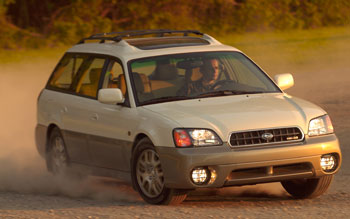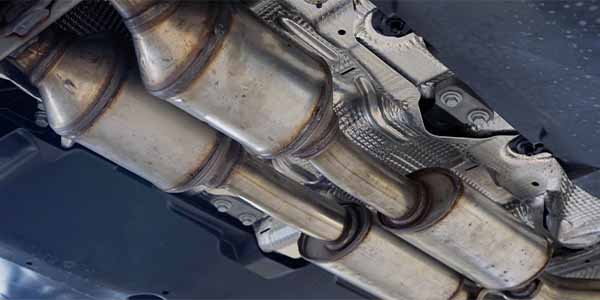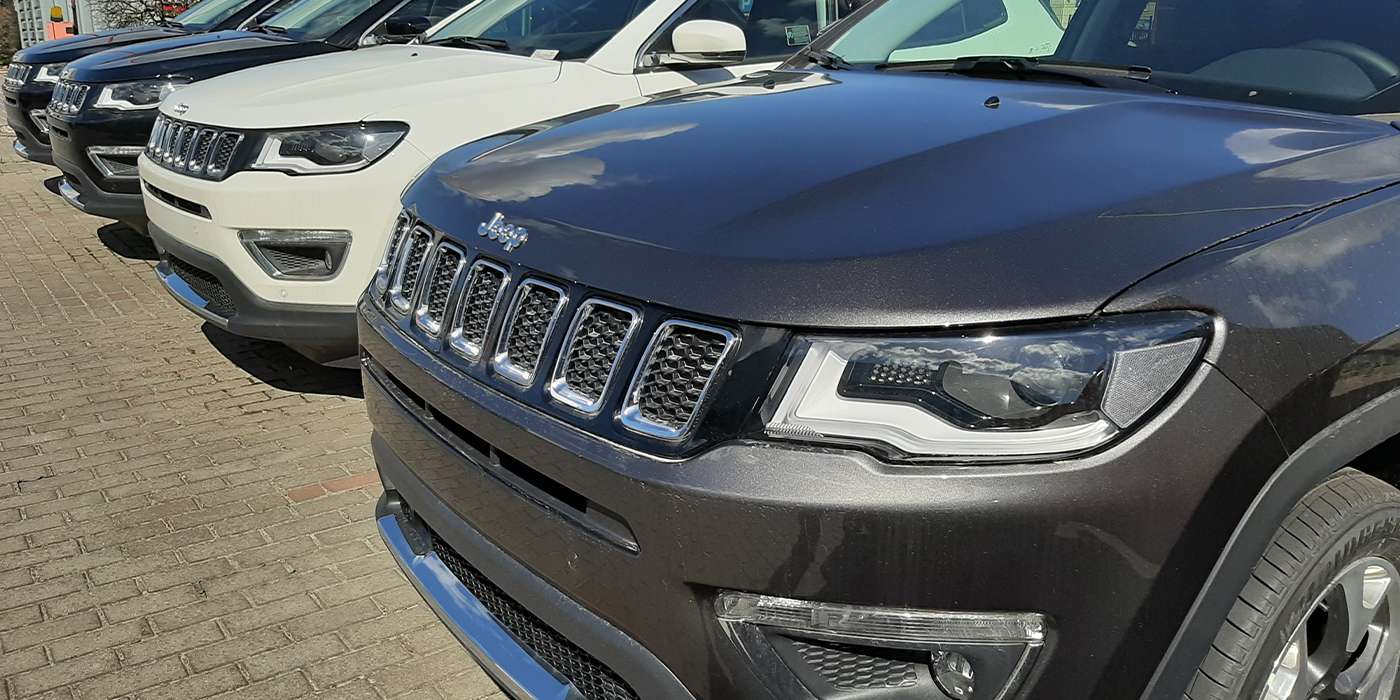Subaru Boxer engines are mounted longitudinally in the chassis, resulting in better balance, reduced driveline friction and efficient power distribution. For added safety, the Subaru Boxer engine’s placement minimizes the chance of harmful intrusion into the cabin during a frontal collision.
According to their engineers, these high-powered engines are ideal for all-wheel-drive applications used in Subaru vehicles because they are inherently compact — short and low. The layout concentrates its mass in a small area and contributes to a lower center of gravity.
The 6-cylinder engine (H6-3.0L) used in such models as the Outback is compact in design and only slightly longer than the 2.5L 4-cylinder engine that powers other Subaru models (see illustration).
Mounting the boxer engine longitudinally (front to back) allows the transmission to be mounted directly behind it.
Since power travels in a straight, near-horizontal line to the rear differential, it helps minimize frictional loss. This symmetrical, uniform layout also provides excellent left-right balance. By comparison, in a vehicle with a transverse (sideways) mounted engine, an all-wheel-drive system requires additional components to reroute the power from a sideways orientation to front-to-back orientation. Such a system adds friction (power loss) and extra weight on one side of the vehicle.
Recent years have brought a need for engines with better fuel economy and lower emissions. With this in mind, Subaru re-examined even the smallest details of its horizontally opposed boxer engine, which has undergone continuous improvement since its introduction more than 30 years ago. In the late 1990s, this scrutiny resulted in an important change in the piston design for Subaru engines that was nothing short of a “piston revolution.”
Piston Power and Crankshaft Secrets
Through experimentation, the engineers at Subaru discovered that a slightly barrel-shaped piston produces less friction, vibration and noise. The engineers then focused on improving the piston skirt (the lower part of the piston that makes contact with the cylinder wall).
In a radical break with convention, the skirt was made shorter and thinner to reduce weight.
Encouraged by the performance of their new piston, the engineers turned their attention to the cylinder. Normally, gas builds up between the head of the piston above the compression rings and the inside wall of the cylinder. (The piston rings fit into grooves on the outer wall of a piston, just below the head. They seal the combustion chambers and the oil rings scrape excess oil from the cylinder walls.)
This unburned, compressed gas is difficult to combust because it is contaminated with leftover exhaust gases, and this reduces fuel economy. To prevent this problem, the gap between the head of the piston and the inside cylinder wall was made smaller, also making it necessary to reduce the piston pin offset and alter how the piston was weighted. These minute changes had an enormous effect on reducing the buildup of unburned, compressed gas.
The crankshaft in a Subaru engine is short because a 4- or 6-cylinder horizontally opposed engine has two banks of two or three cylinders, rather than a long single row of four or six cylinders, as with in-line engines. Second, because the horizontally opposed engine is arranged symmetrically, the weight is more balanced than in in-line engines and the crankshaft needs no extra weight for counterbalance. These two features make the crankshaft both short and light, a significant advantage for any engine part that revolves at such high speeds.
Subaru crankshafts are forged from an extra-hard chrome molybdenum steel, and the engine is designed with five main bearings to support the crankshaft. This combination produces a strong, durable engine. With regular maintenance, it is not uncommon for these engines to go hundreds of thousands of miles without major repairs.
Source: Subaru of America and Subaru’s Drive magazine.
For more on servicing Boxer engines, click here: https://www.underhoodservice.com/subaru-the-complete-service-value-proposition/












